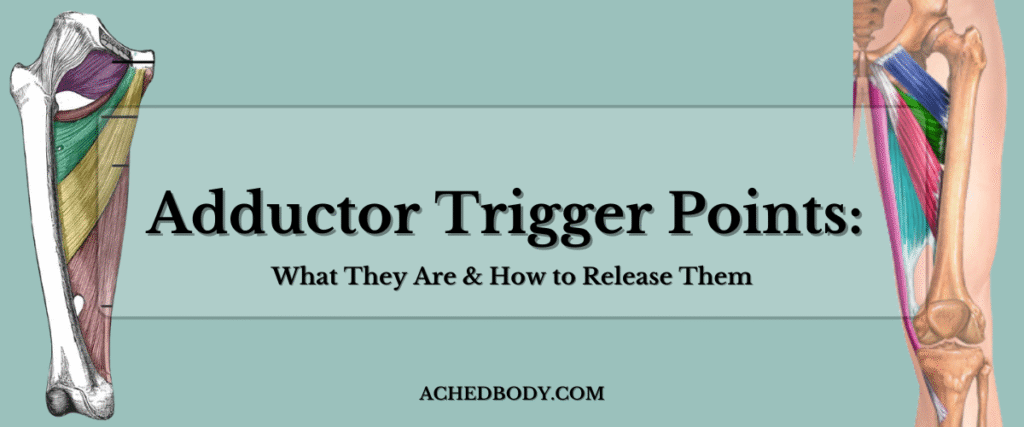
How To Fix Your Adductor Trigger Points
If you’ve tried stretching and foam rolling your groin but still feel nagging tightness or pain, there’s a good chance you’re dealing with adductor trigger points.
In this article, I’ll break down
- What adductor trigger points are
- How to find them
- How to release them at home.
What Are Trigger Points?
Trigger points are sensitive areas in muscle tissue that form due to overuse, trauma, or prolonged tightness.
They tend to feel like ropey bands within the muscle, especially in the adductors.
How to Find Trigger Points in Your Adductors
What You’ll Need:
- One large soft foam trigger point ball
You’ll know when you have a trigger point because the pressure will be extra uncomfortable.
Start by lying face-down with one leg extended out to the side at an angle at the hip and knee.
Using a large soft trigger point ball, gently roll up and down the leg while also moving the muscles side to side.
You will immediately be able to identify the tight areas. And if you haven’t done this in a while, there’s a good chance the entire leg will be an issue.
Look for areas that:
- Feel like dense knots
- Create a deep burning sensation
- Refer pain elsewhere (especially toward the groin or knee)
- Feel sore or twitch when compressed
You can compare sides — the “bad” side will often feel denser, more tender, or more reactive to pressure.
Pro Tip: This should NOT be unbearable. This area of the body is hypersensitive so please use less pressure than you would for your quads or hamstrings when starting out.
How to Release Adductor Trigger Points
Using A Massage Ball
- Lie face-down with one leg bent outward at a 90° angle.
- Place the ball under your inner thigh (avoid the groin crease).
- Roll along the muscle and across the muscle to break up initial tension
- Go back to the tightest areas to apply slow, deep pressure for 20–30 seconds on each tender spot.
- Repeat 2–3 times per side or as needed
- Stretch your adductors using my stretch guide or Ultimate Stretch Guide
Foam Rolling May Be Better For You
Most of the time, I opt for a foam roll session on the adductors because it is more effective.
This area of the body is highly sensitive due to arteries, veins and nerves, so using a broad pressure is optimal.
Read and watch the How-to article for Adductors and use it for your warm up and general body maintenance!
Combine with Stretching and Strength Work for Best Results
After releasing the trigger point, follow up with these stretches to integrate the fresh muscle into your body better.
This is part of properly doing corrective exercise to fix muscles. You can also work in strengthening exercises using full range of motion.
I recommend learning about progressing in these exercises:
- Copenhagen planks
- Weighted butterflies
- Cossack squats
- Sumo squats.
- Wall Middle Splits – Lie on your back and scoot your butt up against a wall (with your legs going up the wall) and open and close your legs.
Those are just a few to get you started.
When to Be Cautious
Trigger point work should not feel sharp, stabbing, or electric.
Be cautious if you have a recent groin injury, nerve pain, or any significant swelling or bruising.
What’s Next
Adductors are always overlooked. That’s why it’s important to get yours straightened out before they act out against you!
They can cause knee and hip pain and lead to serious muscle pulls and tears if they are not trained properly.
This trigger point guide is one part of the overall protocol to fixing your adductors.
If you think more areas might be involved, check out my ultimate guides to test other parts of your body that may be contributing to your pain!
👉 Ready to take the next step? Learn how to stretch your inner thighs or foam roll your adductors for deeper mobility.
Good Luck!
-Nick